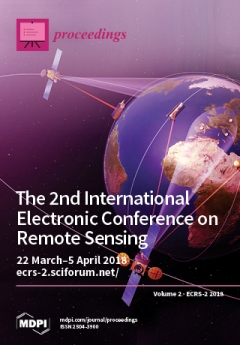Maize is the most commonly cultivated cereal in Africa in terms of land area and production. Low yields in this region are very often associated with issues related to low Nitrogen (N), such as low soil fertility or low fertilizer availability. Developing new maize varieties with high and reliable yields in actual field conditions using traditional crop breeding techniques can be slow and costly. Remote sensing has become an important tool in the modernization of field-based High Throughput Plant Phenotyping (HTPP), providing faster gains towards improved yield potential, adaptation to abiotic (water stress, extreme temperatures, and salinity) and biotic (susceptibility to pests and diseases) limiting conditions, and even quality traits. We evaluated the performance of a set of remote sensing indices derived from Red-Green-Blue (RGB) images and the performance of the field-based Normalized Difference Vegetation Index (NDVI) and SPAD as phenotypic traits and crop monitoring tools for assessing maize performance under managed low nitrogen conditions. Phenotyping measurements were conducted on maize plants at two different levels: on the ground and from an airborne UAV (Unmanned Aerial Vehicle) platform. For the RGB indices assessed at the ground level, the strongest correlations compared to yield were observed with Hue, GGA (Greener Green Area), and GA (Green Area) at the ground level, while GGA and CSI (Crop Senescence Index) were better correlated with grain yield at the aerial level. Regarding the field sensors, SPAD exhibited the closest correlation with grain yield, with a higher correlation when measured closer to anthesis. Additionally, we evaluated how these different HTPP data contributed to the improvement of multivariate estimations of crop yield in combination with traditional agronomic field data, such as ASI (Anthesis Silking Data), AD (Anthesis Data), and Plant Height (PH). All multivariate regression models with an R
2 higher than 0.50 included one or more of these three agronomic parameters as predictive parameters, but with RGB indices at both levels increased to R
2 over 0.60. As such, this research suggests that traditional agronomic data provide information related to grain yield in abiotic stress conditions, but that they may be potentially supplemented by RGB indices from either ground or UAV phenotyping platforms. Finally, in comparison to the same panel of maize varieties grown under optimal conditions, only 11% of the varieties that were in the highest yield-producing quartile under optimal N conditions remained in the highest quartile when grown under managed low N conditions, suggesting that specific breeding for low N tolerance can still produce gains, but that low N productivity is also not necessarily exclusive of high productivity in optimal conditions.
Full article



